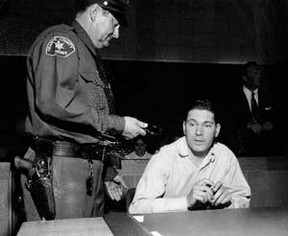 Nobody likes a child killer. It is one of the crimes practically guaranteed to cause outrage and indignation.
Nobody likes a child killer. It is one of the crimes practically guaranteed to cause outrage and indignation.
When it happens in small town America, it's also likely to bring out a mob mentality.
Henry Ford McCracken was found guilty and lampooned in the press, before he had even stepped foot in a courtroom. Everyone knew that he'd done it. His name was on the television and in the newspaper.
The McCracken case was one of the first where live cameras relayed the drama. Anchor men and women joined reporters in endless speculation. Whenever the courtroom doors opened, cameramen jostled to catch a glimpse of proceedings inside.
The murdered girl's mother found herself hounded. She was filmed hiding her tearful face, trying to escape the attention. Viewers back home lapped it up.
A member of the jury became so incensed by the intrusive nature of the reporters, that he lashed out. The camera was smashed into the face of the man holding it. The cameraman retaliated with a sharp right hook. Suddenly there was a brawl between a group of jurors and newsmen. The deputy sheriff had to intervene.
When the jury returned a hung verdict, they must have feared being lynched. District Attorney Davis went on live television berating them for their cowardly decision. Everyone was feeling the severe pressure to perform.
Meanwhile, the thirty-four year old man at the center of the furor was chanting in the dock. "I knew I wasn't guilty! I knew I wasn't guilty!" Henry Ford McCracken chanted it like a child sings a skipping song. "I knew I wasn't guilty!"
He had actually been found guilty of child stealing, but not kidnapping little Patty Hill. The jury had been divided on the final charge of murder. The judge ordered a retrial.
But where would they find a jury, which hadn't been swayed by the antagonistic, blanket press coverage?
Henry's lawyers, George H. Chula, James C. Monroe and Kal W. Lines, immediately appealed for a change of venue. He could not get a fair trial in Orange County, California, now. The court refused; then refused again when a second appeal asked for the same thing.
On October 26, 1951, five months after the murder of ten year old Patty Hill, a second trial saw a unanimous verdict returned by the jury. Henry Ford McCracken was guilty on all counts. He was sentenced to die in San Quentin's gas chamber.
There was another slight problem. Henry wasn't sane. Five years previously, his own mother had taken him to a psychiatrist's clinic. She had become afraid of his out of control schizophrenia. She'd begged the doctor to have him sectioned. The doctor declined. In his opinion, Henry could function safely in society.
Events weren't quite going to support that conclusion. The facts of the matter had never been whether Henry killed the child, but if he'd been sane at the time. He personally thought it might have been a dream.
His lawyers had attempted to convince both juries that Henry was a sexual psychopath. His plea had been 'not guilty by reason of insanity'. However, the prosecution had objected to the filing of affidavits confirming this diagnosis by doctors. The judge had sustained the objection. The defense couldn't prove that Henry was insane without them.
Once on Death Row, that fact was never in doubt. During three years of appeals and counter-appeals, Henry's mental health deteriorated to the point where he couldn't be legally executed. US law states that he has to understand what is happening to him, and why. (For this reason, all narcotics, alcohol and sedatives are also banned on execution day. The condemned may have a small glass of whiskey, but only administered in the presence of a doctor.)
Henry was placed into the care of a psychiatrist specializing in criminal insanity. The remit was clear - make him sane enough that he might be taken to the gas chamber.
It took grueling, pain-staking weeks of treatment, including electroshock therapy. A panel of court appointed psychiatrists declared him legally sane. Henry was then rushed to the gas chamber before he could slip into insanity again.
He was gassed to death on February 19th 1954.


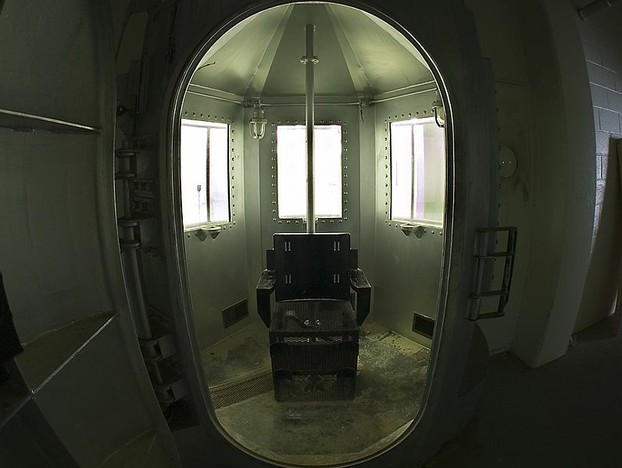

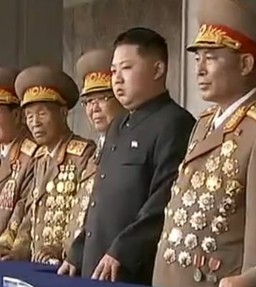 The children fell first. Their parents died trying to force precious oxygen into their mouths, from their own lungs.
The children fell first. Their parents died trying to force precious oxygen into their mouths, from their own lungs.


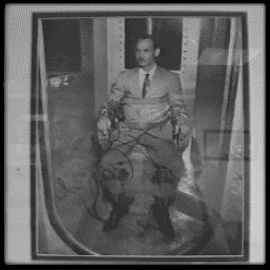 The gas chambers are located within American prison walls.
The gas chambers are located within American prison walls.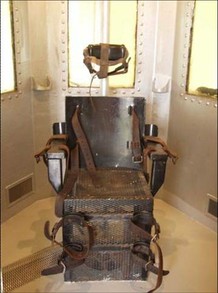
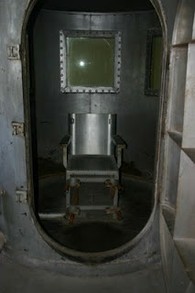
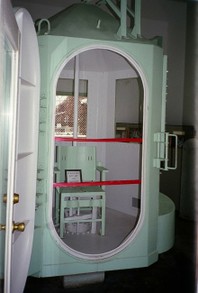
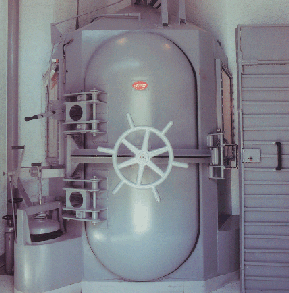
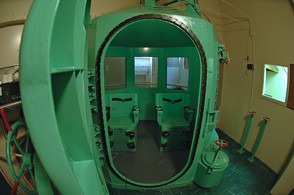
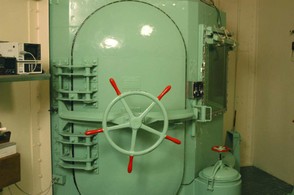


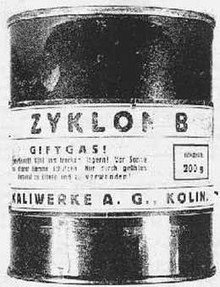 Hydrogen cyanide is better known colloquially to scientists as Prussian Blue. First World War historians call it Prussic Acid.
Hydrogen cyanide is better known colloquially to scientists as Prussian Blue. First World War historians call it Prussic Acid. 



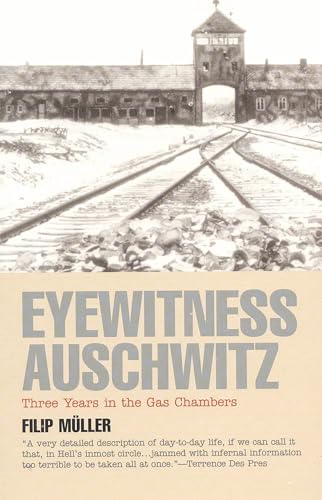





 Nobody likes a child killer. It is one of the crimes practically guaranteed to cause outrage and indignation.
Nobody likes a child killer. It is one of the crimes practically guaranteed to cause outrage and indignation. James
on 10/13/2017
James
on 10/13/2017





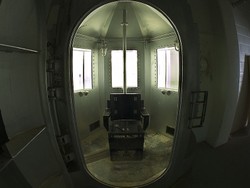

 St Tydecho's Churches in West Waleson 09/03/2014
St Tydecho's Churches in West Waleson 09/03/2014
 Goodies for an Outlander Premiere Partyon 03/06/2015
Goodies for an Outlander Premiere Partyon 03/06/2015
 Holocaust Memorial Day Interview with Rainer Höss, Grandson of Rudolf Architect of Auschwitzon 01/24/2015
Holocaust Memorial Day Interview with Rainer Höss, Grandson of Rudolf Architect of Auschwitzon 01/24/2015
 Romantic Valentine Gifts for an Outlander Fanon 01/16/2015
Romantic Valentine Gifts for an Outlander Fanon 01/16/2015

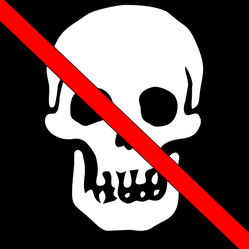
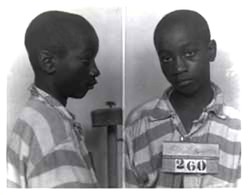
Comments
Thank you very much. I've made those corrections. The Mississippi one came from my misreading a badly crafted sentence in a book.
It referred to the portable electric chair, which the gas chamber replaced, but made it sound like the latter was portable too. Particularly since the local population had objected to something static. They were afraid that it would make their area become known as 'the Death County'.
These same objections are what led to the portable electric chair in the first place there.
Errors abound. Mississippi never had a "portable gas chamber". It was always an object fixed at Parchman Prison since installation in 1954. Jimmy Gray was executed in 1983, not 1987. Delaware has never had a gas chamber. The identity of the chamber in your caption labeled as Delaware is actually Arizona.
Thank you very much, Nick. This one was particularly hard to write, because my research led to some dodgy internet searches. There are some REALLY messed up minds out there.
Great article Jo. Justice systems in all countries are so badly flawed that it is hard not to agree with your stance on death penalties.
Unfortunately you could be right. I also think there's a huge element of a) revenge and b) placate the mob with finding someone, anyone, to punish for the crimes. As long as justice is seen to be done, it is; whatever the reality.
The problem with our justice system is that the goal isn't to find the truth. The goal is let's see what outrageous lies a defense attorney can get 12 stupid people to believe. I give you the O.J. trial and Casey Anthony. The evidence in those cases was so overwhelming it could hit you on the head.
It comes down to humanization. It's easy to make sweeping statements, when you're talking about statistics. Friends aren't statistics, they're real people.
Since 1970, 140 people have been exonerated while on Death Row in the USA. That's 140 individuals who were originally sentenced to death, but turned out to be innocent. And those are the ones that we know about.
I saw. One of my best friends, unfortunately says pretty much the same thing to me, in all seriousness. She told me that she is all for making the death penalty illegal in other countries because their justice systems aren't fair like it is in the US, but says that we do it right in America. I argued her point that we're not as perfect as she believes and she replied that innocent people dying 'can't be helped' and it is 'just the way it has to be', and 'no system is perfect all the time,' and 'you gotta weigh the pros and cons', and the pro of giving a murderer 'true justice' outweighs the cons of when we make mistakes, because, according to her, it happens so rarely. I asked what if it were her being unfairly judged, and with all seriousness she replied it would never happen to her. All this from the same friend who made the flippant off-hand comment that should any of her friends ever murder someone, she knows exactly how she'd cover it up and she'd help them get away with it... So apparently, if you are her friend, you're not deserving of the death penalty for being a murderer, but everyone else, they sooo deserve it. The logic is strong with that one. I know that she hasn't taken the time to think about it, she just thinks it's something that America has always done, and that it works really well, because that's what we get taught when we are young. But I can't even get her to feel sympathy for anyone whose been innocent and killed by our justice system, it'd take a miracle to get her to feel sympathy for someone she sees only as a guilty murderer, with no humanity left. She's all too happy being a lemming anyways, she hates all politics in general, or so she says.
Thank you very much. I'm right at this moment in a Twitter conversation with someone who wants North Korea-esque gas chambers in the USA.
I hope that he's trolling, but he's not backing down, if he is.
What an article to open my day with, but I can't say I wasn't fairly warned :( This was heart-breaking. I was crying before I was even half-way through.
Its such a shocking reality that I was when it comes down to it, I completely unaware of. I mentioned before, I didn't know the gas chamber had ever been used in the US, and then on top of that to read just how terrible it really is... :(
But, excellent writing as always <3